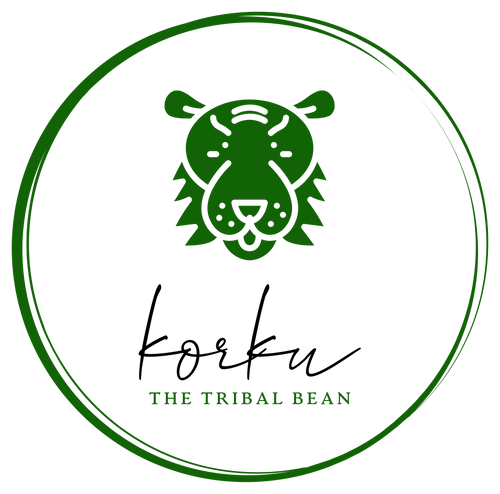Coffee, a beverage that has become an essential part of our daily routine, is not just a drink but an experience. From the moment we inhale its aroma to the moment we savour its taste, coffee takes us on a journey that begins with the humble coffee bean. The journey of a coffee bean is a fascinating one that involves several stages, each of which plays a significant role in the creation of the perfect cup of coffee.
In this article, we have delved into each phase of the coffee-making process, starting with harvesting. Coffee cherries are hand-picked from the coffee plant in several rounds, with only the ripest cherries selected. At Korku Coffee, cherries are sorted by density, and only the heavier, denser cherries are selected, as they are believed to produce higher quality beans.
The drying process is a critical step in the journey of a coffee bean. It is during this stage that the beans develop their unique flavors and aromas. The way in which the beans are dried can have a significant impact on the final flavor of the coffee.
Natural drying is the traditional method of drying coffee beans. It involves spreading the cherries out in the sun and allowing them to dry naturally over a period of several weeks. During this time, the cherries are raked and turned regularly to ensure even drying. This method is often preferred by specialty coffee producers as it is believed to result in a superior flavor profile.
In contrast, machine drying is a much quicker method that involves using large-scale mechanical dryers to remove the moisture from the beans. This method can be more efficient and consistent than natural drying, but it may not result in the same depth and complexity of flavors that natural drying can produce.
Overall, the drying process is a crucial step in the journey of a coffee bean. Whether natural or machine drying is used, careful attention must be paid to the environmental conditions to ensure that the beans develop the best possible flavors and aromas.
Hulling is a crucial step in the coffee bean journey as it helps remove the outer layers of the dried cherry to reveal the green coffee beans inside. There are different methods of hulling, including manual and machine-assisted processes. At Korku Coffee, we prefer to hull our coffee beans manually using a traditional method of pounding the dried cherries with a wooden or metal pestle.
The manual process of hulling may be time-consuming and labor-intensive, but it helps to ensure that the coffee beans are not damaged during the hulling process. It also allows for greater control over the quality of the coffee beans and the final product. This is because, during manual hulling, the beans are not subjected to harsh vibrations or impacts that can occur during machine-assisted processes, which can lead to uneven or damaged beans.
Moreover, by manually hulling the coffee beans, we are able to ensure that only the highest quality beans make it to the roasting stage. Any damaged or defective beans are removed during the sorting stage to ensure that our coffee is of the highest quality.
Sorting is the next phase, where the beans are sorted by size and shape to ensure even roasting. Perforated sheets of varying hole sizes are used to sort the beans and debris. This process categorizes the beans according to their size and prepares them for the roasting process.
Roasting is a crucial step in the coffee-making process as it is where the beans develop their unique flavor and aroma. During roasting, the coffee beans are subjected to high heat, causing them to undergo several chemical reactions. The heat transforms the beans from their green state into the brown, aromatic coffee beans that we all know and love.
One of the most significant factors in the roasting process is the roast level, which refers to the degree of darkness or lightness of the roast. Different roast levels can produce vastly different flavors, with lighter roasts being more acidic and fruity, and darker roasts having a more robust, smoky flavor.
At Korku Coffee, we roast our beans in small batches to ensure consistency and quality. We use a classic drum roasting technique, where the beans are roasted in a rotating drum, giving them an even roast. We pay close attention to factors such as roasting temperature and time to ensure that each batch of coffee is roasted to perfection.
Grinding is the process of breaking down the roasted coffee beans into smaller particles to extract their flavor and aroma. The grind size determines how quickly the water extracts the coffee's flavor, so it's essential to grind the beans to the appropriate size for your brewing method.
There are three main grind sizes: coarse, medium, and fine. Coarse grind is used for brewing methods such as French Press, while medium grind is used for drip coffee makers. Fine grind is used for espresso machines.
At Korku Coffee, we grind our beans just before brewing to ensure maximum freshness and flavor. We use specialized grinders that allow us to adjust the grind size to match the brewing method, ensuring that each cup of coffee is perfectly brewed.
In conclusion, the journey of a coffee bean is a long and complex one that requires great care and attention to detail. From harvesting to grinding, each stage plays an essential role in creating the perfect cup of coffee. Korku Coffee's unique approach to coffee-making, which involves manual labor and natural drying, sets them apart from others in the industry.

